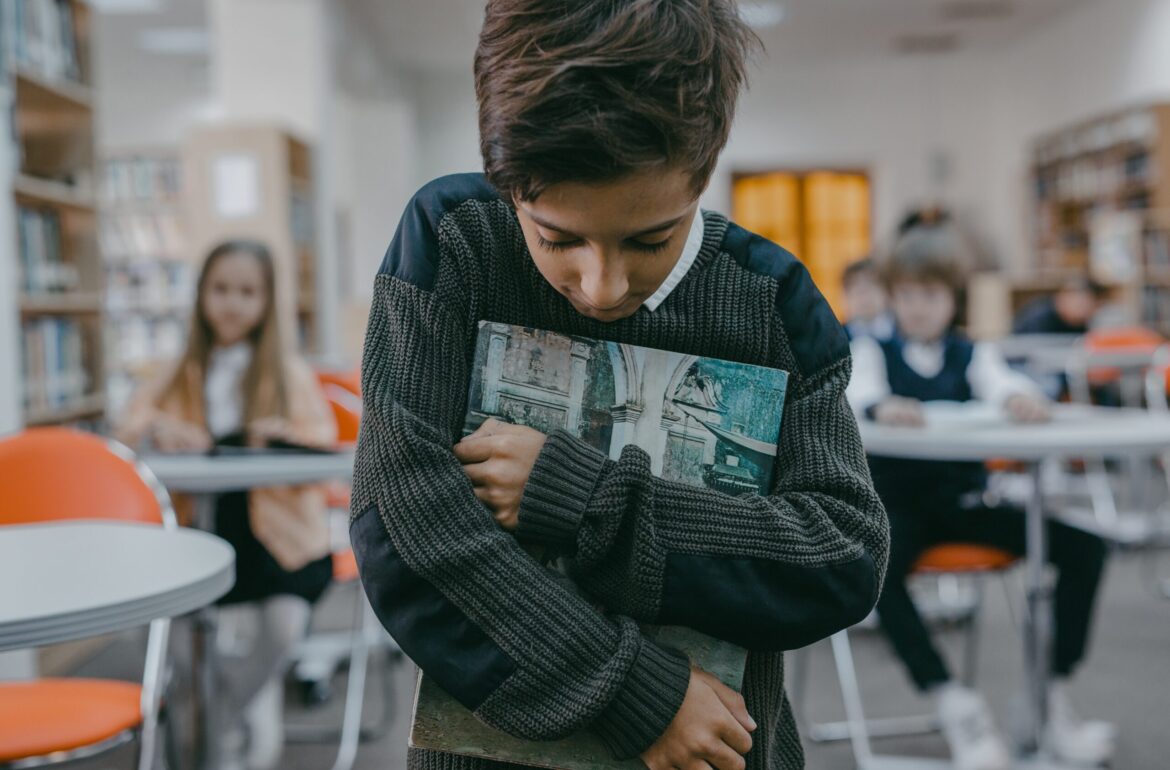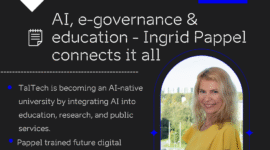Most experts agree that all children, with or without disabilities, should be in the same schools, but ultimately it is teachers who determine whether they’ll thrive. A study looked at what helps to get educators more on board.
An ordinary public school lesson in a small Estonian city. A seven-year-old boy cries under the desk. He lets out an occasional scream and kicks his feet in the air. His classmates don’t even lift their heads from their notebooks. There is nothing strange or new about this situation for them. They know that some kids in their class are different, and that’s okay.
Their young teacher Ingrid (who asked that her name be changed so as not to reveal her pupils’ identities), has worked hard to show these first graders what inclusion and acceptance mean. Sometimes she forgoes the official school curriculum to discuss values, feelings and experiences. She promotes a space to bring out the positive in each other. Children propose rules they’d like to see in their classroom. Ingrid makes sure every child develops at their own pace.
“I want to avoid my pupils from going through what I did as a student, being a little different,” she explained. She is wired to teach her students about the life that lies beyond just letters and numbers. It’s not always easy, she admits, often feeling alone without support. School psychologists are overloaded with work, it took her years to have another teacher assist with an autistic boy in her class.
It starts with perspective and attitude
Not all teachers in Estonia have as much patience and will as Ingrid. Studies show that educators’ attitudes are critical in successfully bringing all children under the same roof. School leaders’ vision is equally important, a Tartu University study showed.
Even though Estonian children shine in global education tests, there is still a long way to go regarding inclusive education. This term is imbued with a beautiful idea: no child should be excluded from participating in the learning process, regardless of their needs and capabilities. It’s their right.
Looking at education through an inclusive lens implies a shift from seeing the child as the problem to seeing the education system as the problem, a UNESCO report points out.
Many children in Estonia have access to education at a younger age than in other countries. In 2016, 90 per cent of three-year-olds participated in pre-primary education compared to the OECD average of 76 per cent.
But inclusive education is more than just opening the doors to everyone.
“It’s about being able to participate and being present in learning, to be part of a community,” said Professor Stein Erik Solbø Ohna from the University of Stavanger in Norway. He has studied the topic for two decades and concluded that education research should focus on the dilemmas teachers face in their day-to-day work. “We should look at where to find practices that exclude certain children,” said Ohna. In his view, we should listen to the teachers and look at what possibilities they are given to include everyone.
Inclusion is a diverse concept, understood in a myriad of ways by many different countries.
Estonia still has a long way to go.
The University of Tartu and Tallinn University’s five-year research project examines the possibilities of educating teachers in inclusive education. Estonian researchers cooperated with the University of Oslo and the University of Stavanger in Norway.
Their survey showed that most pre-service teachers would “rather not” or “definitely not” include children with psychological disabilities in an ordinary school setting. Most respondents also said that children with more than one disability should not be included. More than a third of respondents would not admit visually impaired or pupils with hearing difficulties in ordinary schools.
Even if in the same building, children with more difficult disabilities should be in separate classrooms, according to some respondents.
It was clear that most Estonian teachers were not ready for the change.
The project resulted in a unique course for teachers in training. The results were remarkable. After passing the course, the confidence in including students with learning difficulties or disabilities in lessons was statistically significantly higher.
The future teachers especially valued hearing about real-life situations and practical advice on how and what to do in classrooms. They deemed the enthusiasm and charisma of the speaker necessary too. The training included discussions and self-reflection.
“We knew that the teachers’ attitudes play the central role,” said Triin Ulla, the project coordinator at the Tallinn University. To bring about positive change, teachers should understand the value and the reason behind inclusive education.
Ulla said that about a quarter of the children in Estonia have some degree of support in an educational setting.
Every tenth child has a disability
Every tenth child globally has a disability, either psychological or physical, according to the UNICEF report published last year. When including the children who are not diagnosed or who simply need more attention, who are above-average talented and need a different approach, the number would surely be higher. The school teacher Ingrid estimates that around half of her pupils require specialised attention.
That is a lot of responsibility to take on for one teacher.
“Collaborating with other teachers is important,” said Professor Ohno. “Teachers alone can only do as much, but together in a community of other teachers, they can use knowledge to facilitate the children’s options for learning.”
In Estonia, the principles of inclusive education were established at the legislative level in 2010. In 2019 Estonia had 516 schools providing primary education, of which 39 were special schools.
“It is not easy to change teacher attitudes, as it is at the core of teachers’ professional identity,” said Ulla. “Our society is characterized by conflict and polarization. The change can begin at school by cultivating a culture of appreciation and acceptance of difference, which is in the power of teachers.”
Every year, teachers become more favourable toward inclusive education.
“Our competencies in inclusive education have developed massively over the recent years,” said Tiina Kivirand, a lecturer at the Institute of Education in the University of Tartu. “We are bringing together support specialists, schoolteachers, and leaders,” said Kivirand. “We increasingly realise the importance of local governments in these discussions.”
Like many other countries, Estonia competes with old stigmas. During the Soviet Union, special needs children were kept at home or sent to special schools far away. In ordinary schools, the kids were typically clustered for better or worse.
All of this is changing fast. “Four years ago, we didn’t even have scientific articles on inclusive education in Estonia,” Kivirand said. Now it’s the buzzword.
Ingrid has taken part in many training courses on inclusive education but now chooses them more carefully. “There is no use for me to listen to someone with no practical experience in inclusive education,” she explained. “I need more real support like school psychologists and assistants, more time to prepare for the classes, not theories.”
Written by: Marian Männi. This article was funded by the European Regional Development Fund through Estonian Research Council.
 Back
Back



